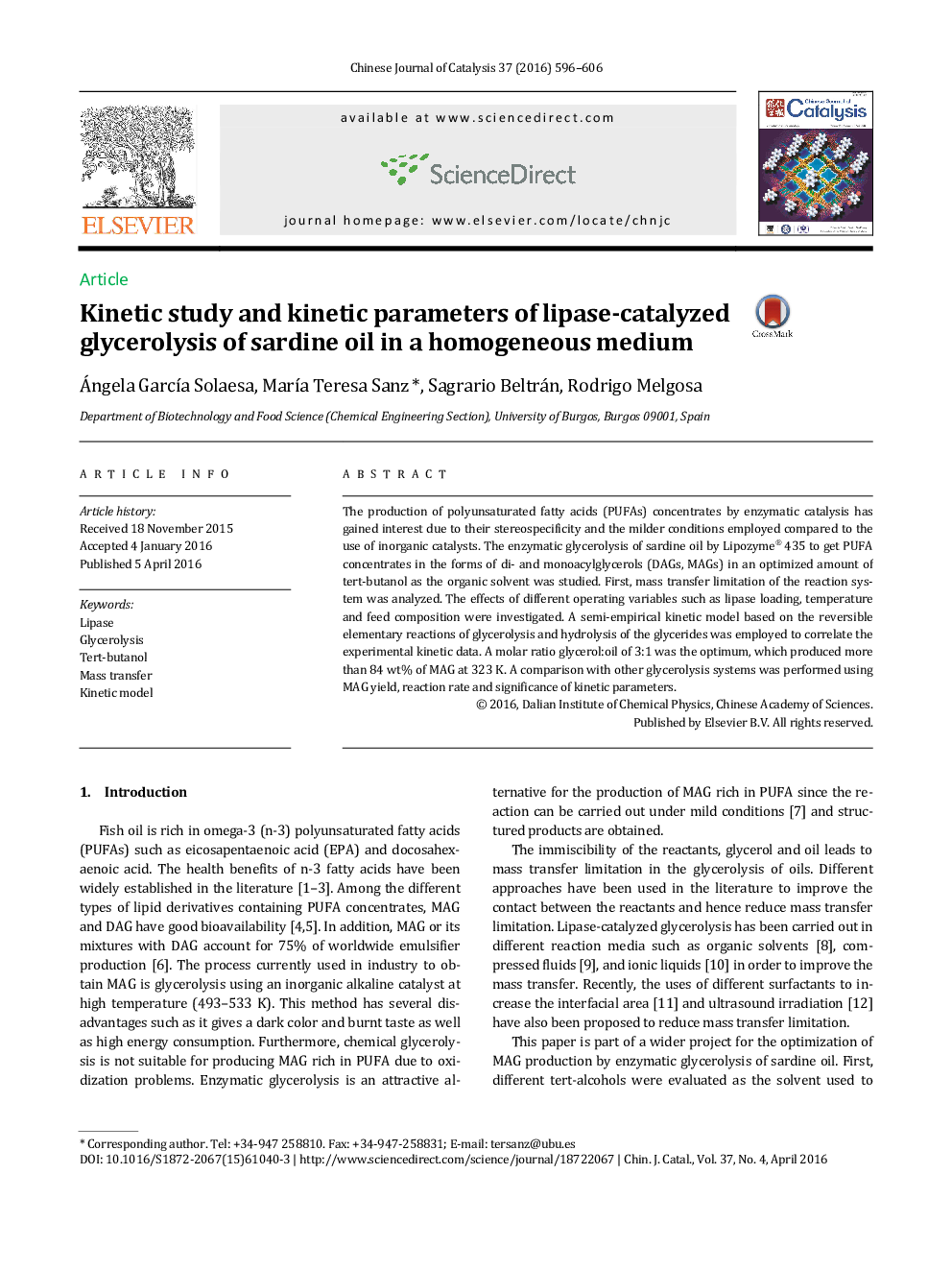| Article ID | Journal | Published Year | Pages | File Type |
|---|---|---|---|---|
| 59157 | Chinese Journal of Catalysis | 2016 | 11 Pages |
The production of polyunsaturated fatty acids (PUFAs) concentrates by enzymatic catalysis has gained interest due to their stereospecificity and the milder conditions employed compared to the use of inorganic catalysts. The enzymatic glycerolysis of sardine oil by Lipozyme® 435 to get PUFA concentrates in the forms of di- and monoacylglycerols (DAGs, MAGs) in an optimized amount of tert-butanol as the organic solvent was studied. First, mass transfer limitation of the reaction system was analyzed. The effects of different operating variables such as lipase loading, temperature and feed composition were investigated. A semi-empirical kinetic model based on the reversible elementary reactions of glycerolysis and hydrolysis of the glycerides was employed to correlate the experimental kinetic data. A molar ratio glycerol:oil of 3:1 was the optimum, which produced more than 84 wt% of MAG at 323 K. A comparison with other glycerolysis systems was performed using MAG yield, reaction rate and significance of kinetic parameters.
Graphical AbstractThis work presents a detailed kinetic study of enzymatic glycerolysis of sardine oil catalyzed by the commercial lipase Lipozyme® 435. Glycerolysis is carried out in tert-butanol to create a homogeneous system avoiding mass transfer limitations.Figure optionsDownload full-size imageDownload as PowerPoint slide
